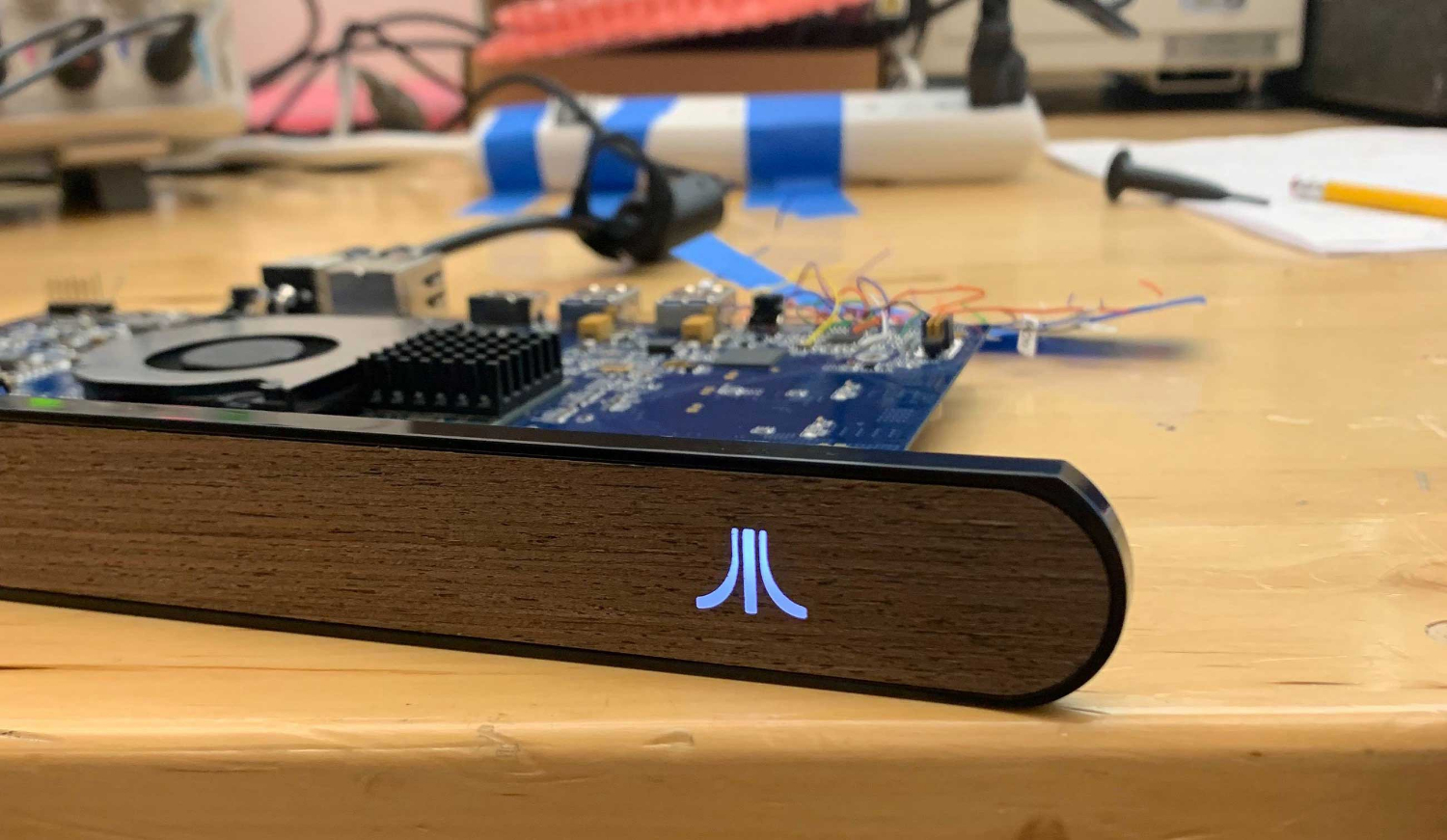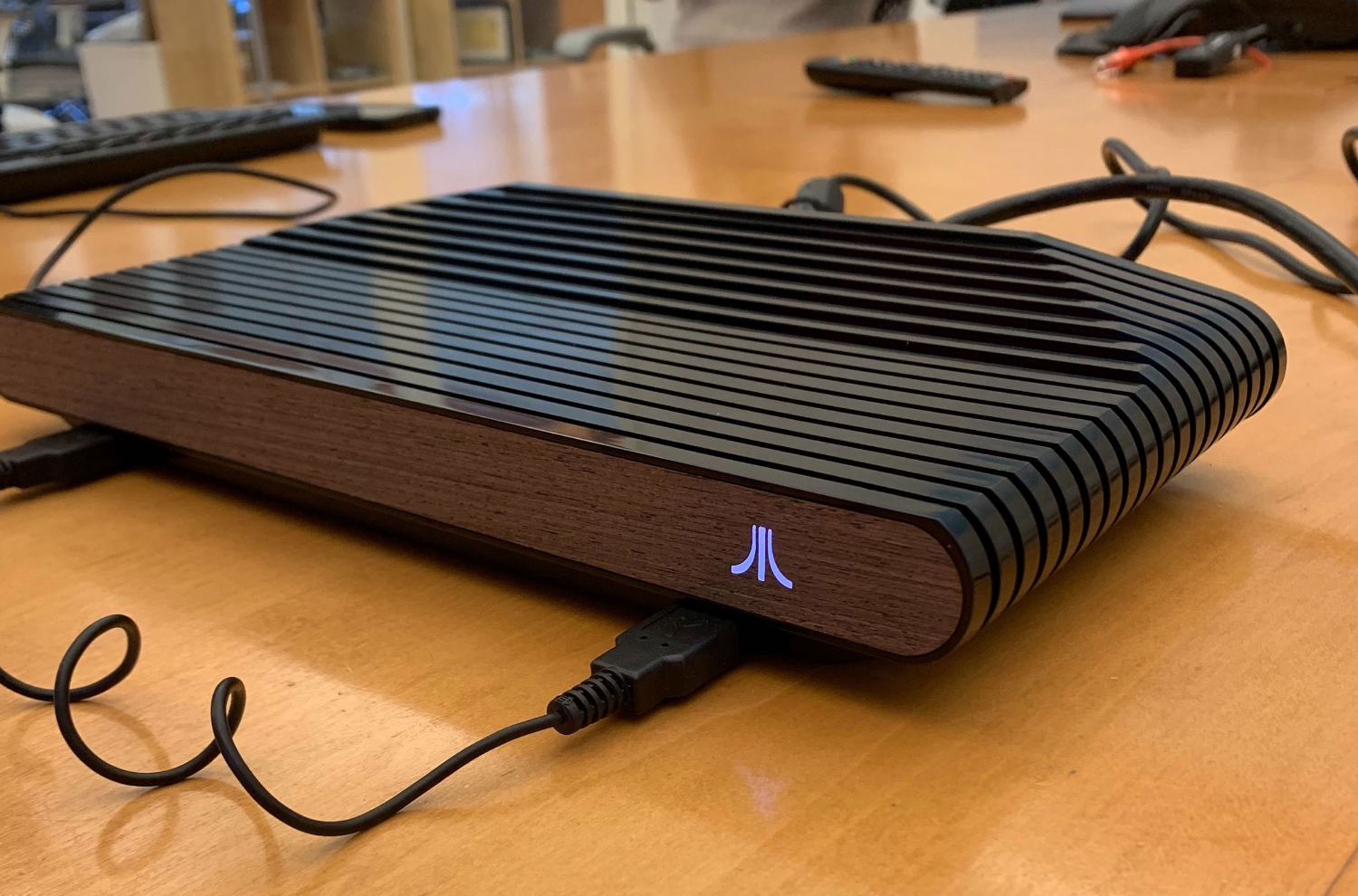Atari VCS: Architect Quits Designing AMD-Powered Device, New Pics Shared
Update 10/8/2019 2 p.m. ET: Atari VCS' architect, Rob Wyatt, has quit, putting the future of the gaming device in question. Wyatt, who also helped found the Xbox, said he quit because Atari hasn't paid invoices to his design consultancy "going back over six months."
Original article 10/8/2019 11:18 a.m. ET:
The Atari VCS isn't expected to debut until March 2020, but that didn't stop Atari from sharing pictures of the hardware's development on Medium today, offering the first glimpse at how the actual device will compare to the renders the company's been sharing since first announcing the device in 2017.
A quick recap: Atari announced its return to the gaming hardware market (the company doesn't want the VCS to be called a console) in 2017 with the Ataribox. It eventually rebranded that to the Atari VCS, raised more than $3 million on Indiegogo and started bringing the device to tradeshows. It was originally supposed to ship in July 2019, but its launch date changed a few times after the Indiegogo project was successfully funded.



That brings us to the Atari VCS of today. We already knew the not-a-console would feature an AMD Ryzen Embedded 1606G processor and have 32GB of eMMC storage from our meeting at E3 2019 about the Atari VCS. Today we learned the device will also offer an open port for a SATA M.2 SSD and that its 8GB of SODIMM DDR4 memory is upgradeable.
Atari also revealed that the device will feature a custom-designed cooling solution. Here's how it works:
"The AMD APU has thermal sensors and a fan controller system that monitors the APU temperature and adjusts the fan speed according to the unit’s needs at a given moment," Atari explained.
"It is supported in its efforts by the two large vent ports on the the back fascia of the unit. Looking at the back straight-on view, the slotted vents on the right rear will allow outside air to be sucked into the unit to cool the processor and other parts, while hot air is simultaneously forced out and away from the unit through the vents on the left. You can’t really see it in the photos, but the vent slots are all angled to drive air away from the unit. There’s also die-cut metal mesh screens to prevent small objects from getting inside the VCS through the open vents."
Get Tom's Hardware's best news and in-depth reviews, straight to your inbox.
Atari said the tooling for the VCS' plastic parts are "largely complete" and that gaming accessories vendor PowerA has "the awesome new Atari Classic Joysticks and Atari Modern Controllers ... just about ready for mass production." Once the companies actually enter mass production, they expect to be able to make "thousands of units quickly and efficiently." Then it's a matter of shipping them to Indiegogo backers before releasing them to the public.
The device still appears to be in a relatively early stage. Atari said its pre-production units "operate more like a computer than a fully-functional game system at the moment." Further software development is planned, and Indiegogo backers who receive their units early are asked to share their feedback on that aspect.
Photo Credits: Atari

Nathaniel Mott is a freelance news and features writer for Tom's Hardware US, covering breaking news, security, and the silliest aspects of the tech industry.
-
Rogue Leader Shocked, totally shocked that the Vaporware continues to be Vaporware. Just waiting for the lawsuits when this house of cards collapses.Reply
